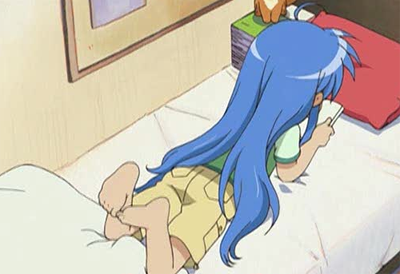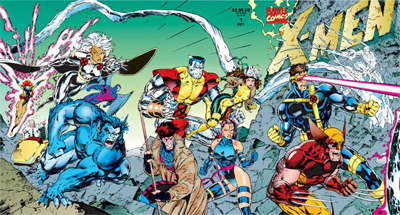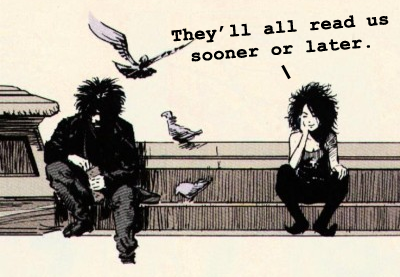Women and Comics Editorials, Part Eleventy Billion
Recently comic creator Hope Larson, of the tween girl series Chiggers and the romantic Grey Horses, recently released the results of an informal study she conducted with 198 teenage girls and women, all comic readers. The results were interesting and, true to form, many pundits reporting on the finding missed the point entirely.
In the interest of disclosure, I am a female fan of fairly few American comics, and of a lot of manga. I won’t claim to be particularly invested in or familiar with “being a female comics fan,” but it seems to me that much of the blog coverage of Larson’s piece has been either disingenuous or kind of clueless.
In particular, the fact that “superhero comics were the most popular category of comic, closely followed by manga,” and that the most popular comics included X-Men, Sandman, works by Alan Moore, and works by manga supergroup CLAMP seemed to many as a sign that attempts to create a line of comics for women– most infamously DC’s ill-fated Minx line –are silly. Obviously women just want “good” comics.
I don’t entirely disagree with the sentiment– Minx, like many of DC’s projects (goodbye, CMX Manga!), felt decidedly mercenary, rather than driven by the desire to actually make good comics. But the reasoning behind it is entirely flawed.
Superhero comics and manga are the vast majority of comics easily available to the general public. Women’s favorite comics genres, according to Larson’s study, are superhero comics and manga. So what this piece of the survey generally tells us is that…women who like comics like comics. The people she talked to have already been attracted to the market. This doesn’t make Larson’s work any less useful; any comics company should be taking established female readers into account. But it doesn’t really say anything about what comics companies should do in order to attract new, female readers who aren’t established comics fans.
This is, I believe, the primary goal of a project like Minx, or perhaps even DC’s largely female-focused CMX Manga line, may it rest in peace– not simply attracting women who already read comics, but drawing in women who don’t, and bringing new dollars to the table. Minx wasn’t an attempt to draw readers away from manga and Spider-Man Loves Mary Jane; its competition was Twilight and High School Musical.
Granted, Minx was a misguided attempt that failed. And let me also note that I do think Larson’s survey results are interesting and useful. But to suggest that these results prove that no one, particularly the big two, should ever create to make comics “for women” is just silly. Everyone has the possibility of becoming a comics fan, given the right opportunity– and who’s to say what that might be?
Gia Manry is a professional writer based in San Francisco, CA. She likes being followed on Twitter and can also be contacted via her website.


















